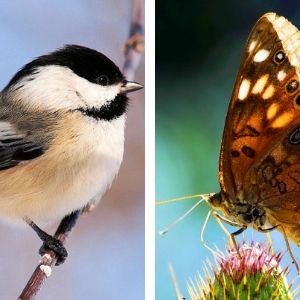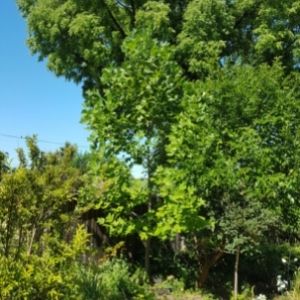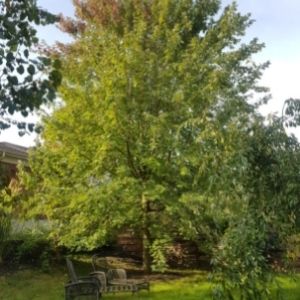Biodiversity refers to a variety of living organisms which can include plants, animals, insects and fungi. Planting a diverse range of trees can be very beneficial in an urban setting where there are often fewer trees, so each individual tree is very important. Tree diversity can also enhance the many social and environmental benefits that the urban forest provides. These become increasingly important as much of the world’s population shifts to “city-living.”
Why is Tree Diversity Important?

1. To Improve Wildlife Habitat
Planting a variety of tree species can help support a variety of wildlife. For example, the hackberry tree produces fruit and seeds eaten by small mammals and birds and is a specific host for the hackberry butterfly. The sugar maple is great for nesting birds such as chickadees and woodpeckers. The Ohio buckeye produces large spring flowers that attract hummingbirds and fruits that are often eaten by squirrels. The white spruce produces seeds that are a great winter food source for chickadees and nuthatches. These are just some examples of how planting different trees can attract a wider range of wildlife species year-round. This is important since wildlife tends to have more difficulty sourcing food, water and shelter in an urban setting than they would in a natural forest.

2. Improve Urban Forest Resilience

3. Supports Ecosystem Services
Ecosystem services refer to the benefits that nature can provide to humans (and other living organisms). A healthy, diverse, urban ecosystem can help absorb air pollutants, promote physical and mental well-being, generate more environmental interest, improve water quality and improve soil quality. Monocultures (the planting of only one species) might be able to achieve some of these in the short-term but are not sustainable long-term. Not only does planting a wide range of species help the environment, but it can make cities more beautiful! A variety of trees means a variety of leaf shapes, canopy shapes, flowering/blooming times and fall colour.
If you would like to learn more about how to improve species diversity in your backyard, LEAF offers a variety of trees, shrubs and perennials. Apply today to our subsidized Backyard Tree Planting Program to plant native trees and shrubs on your property for less.
Want to learn more about the connection between the urban forest and urban wildlife? Visit our Backyard Biodiversity campaign page and follow us on social media where we share tips and fun facts!
Adriana Rezai-Stevens is the Residential Planting Programs Field Coordinator at LEAF.
The #BackyardBiodiversity campaign is a partnership initiative with the Toronto Wildlife Centre and is supported by Ontario Power Generation.
LEAF offers a subsidized Backyard Tree Planting Program for private property. The program is supported by the City of Toronto, the Regional Municipality of York, the City of Markham, the Town of Newmarket, the Regional Municipality of Durham, the Town of Ajax, the City of Oshawa, the City of Pickering, the Township of Scugog, the Town of Whitby, Ontario Power Generation, Ontario Trillium Foundation and GrandTrees/Canadian Trees For Life.
